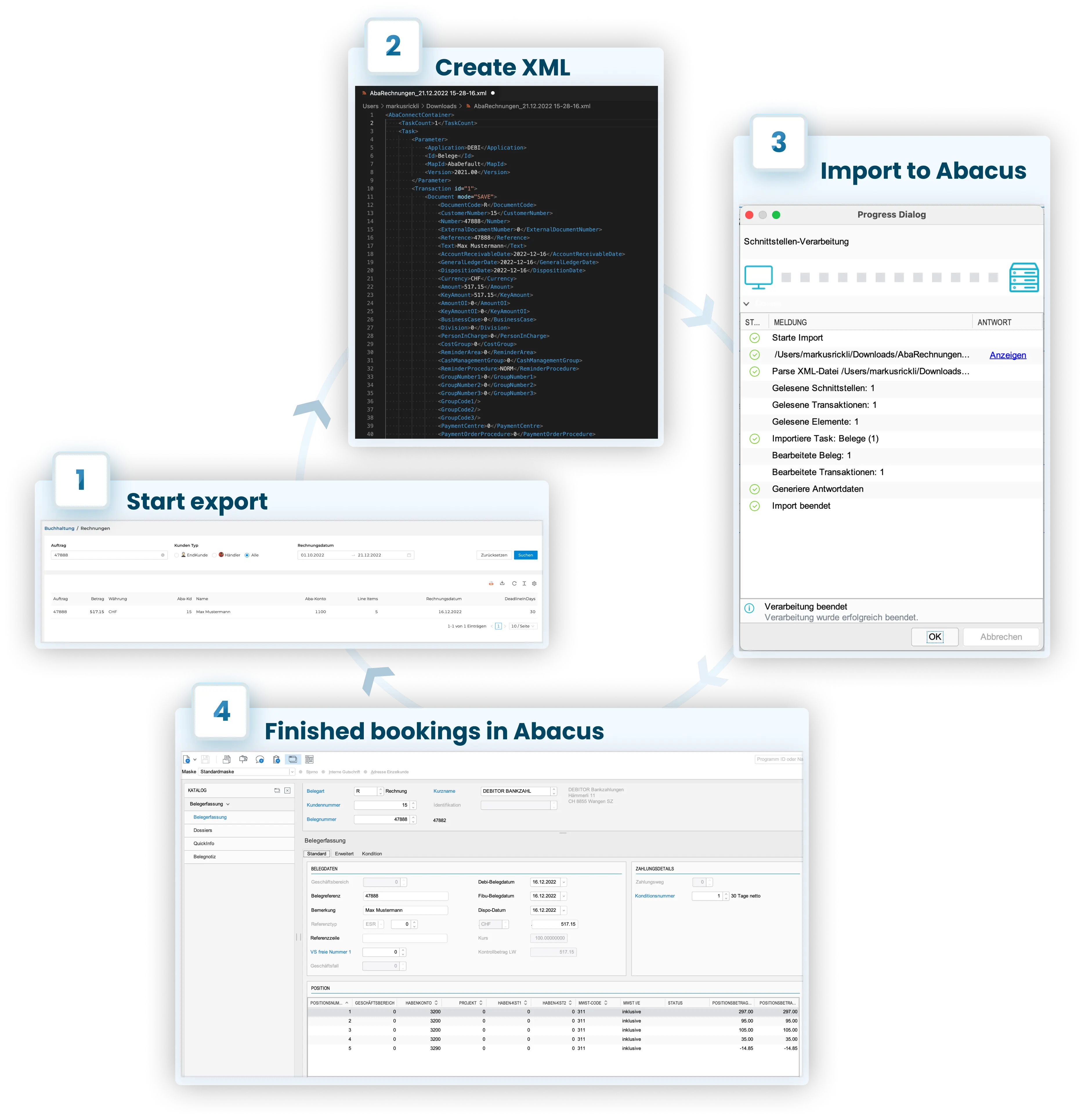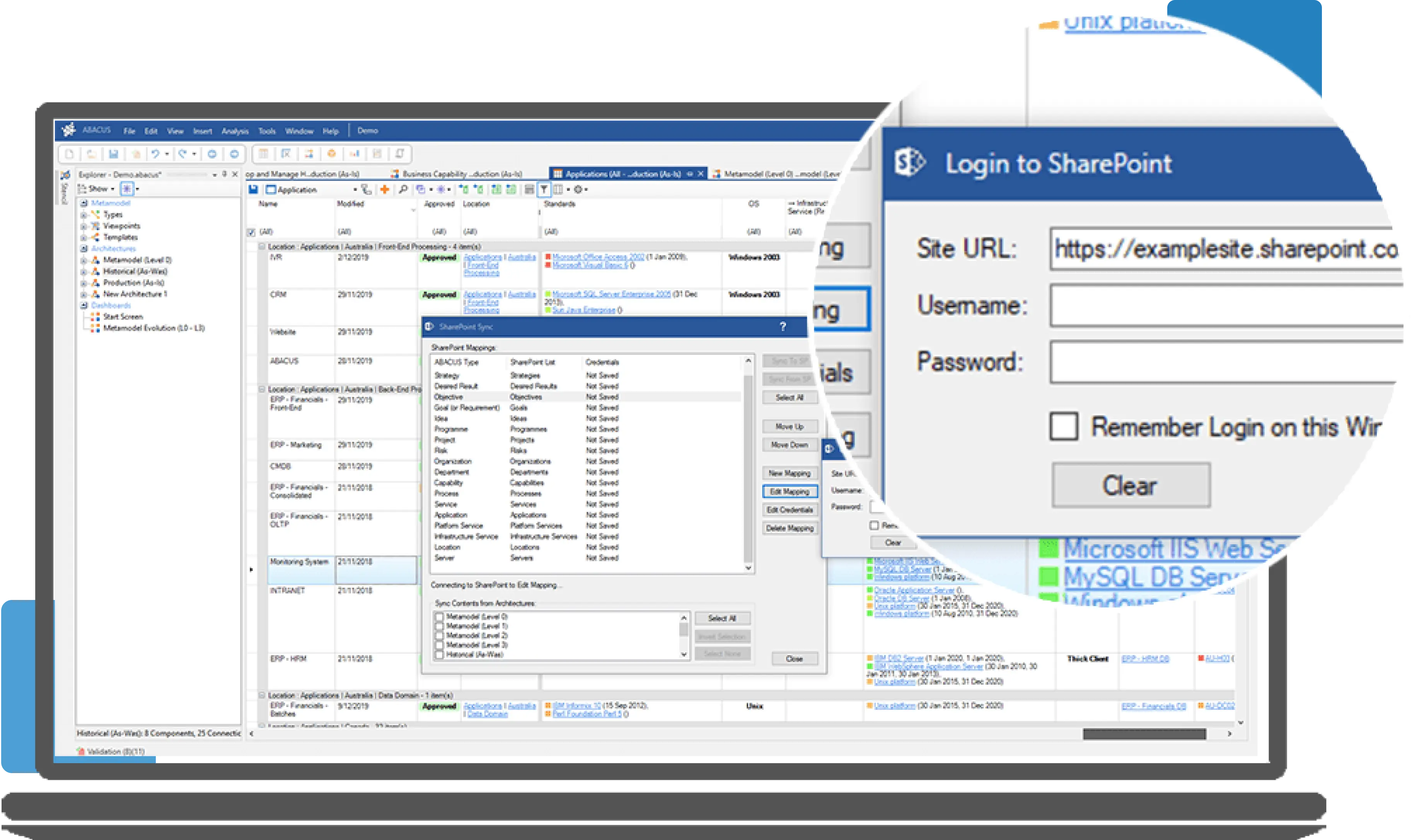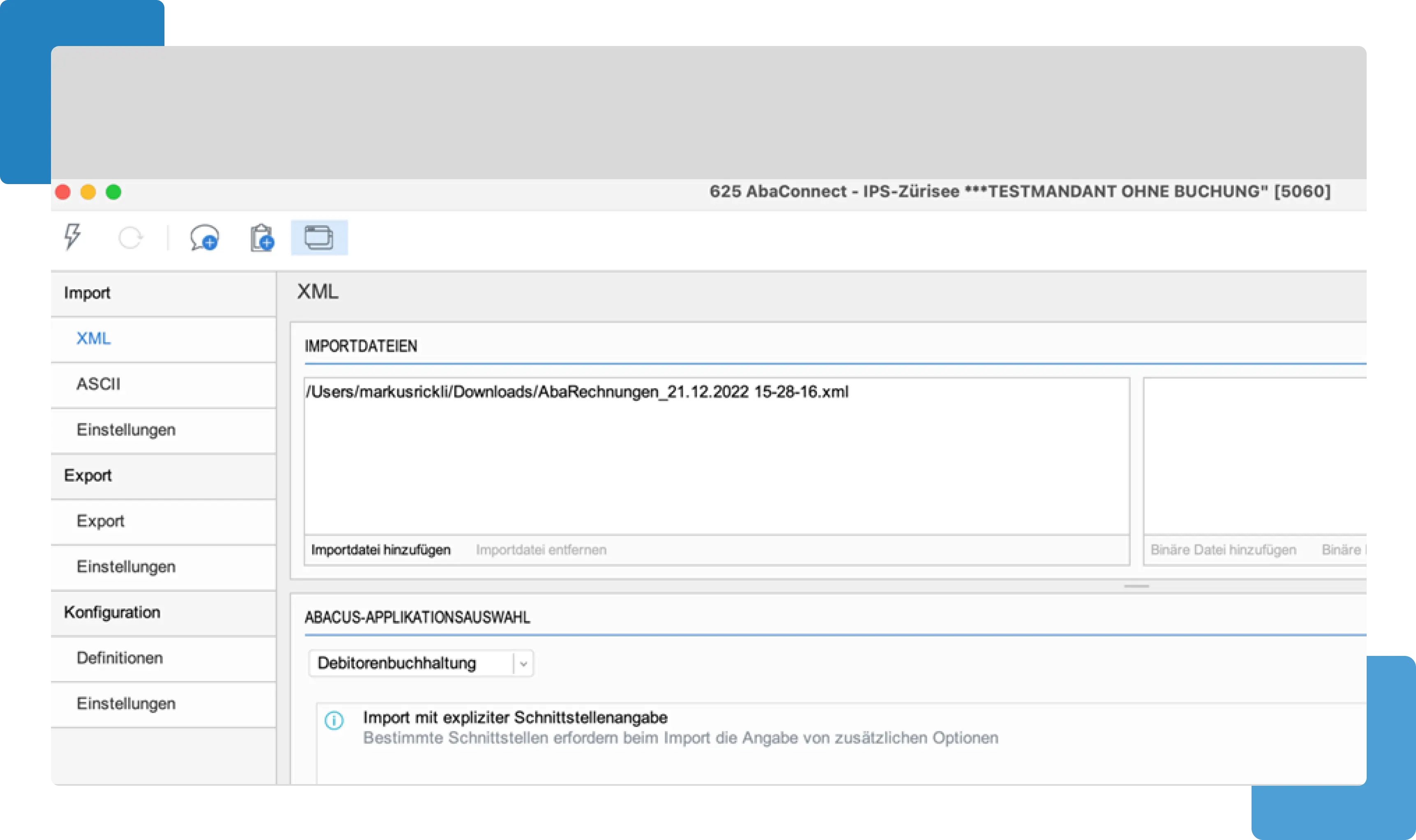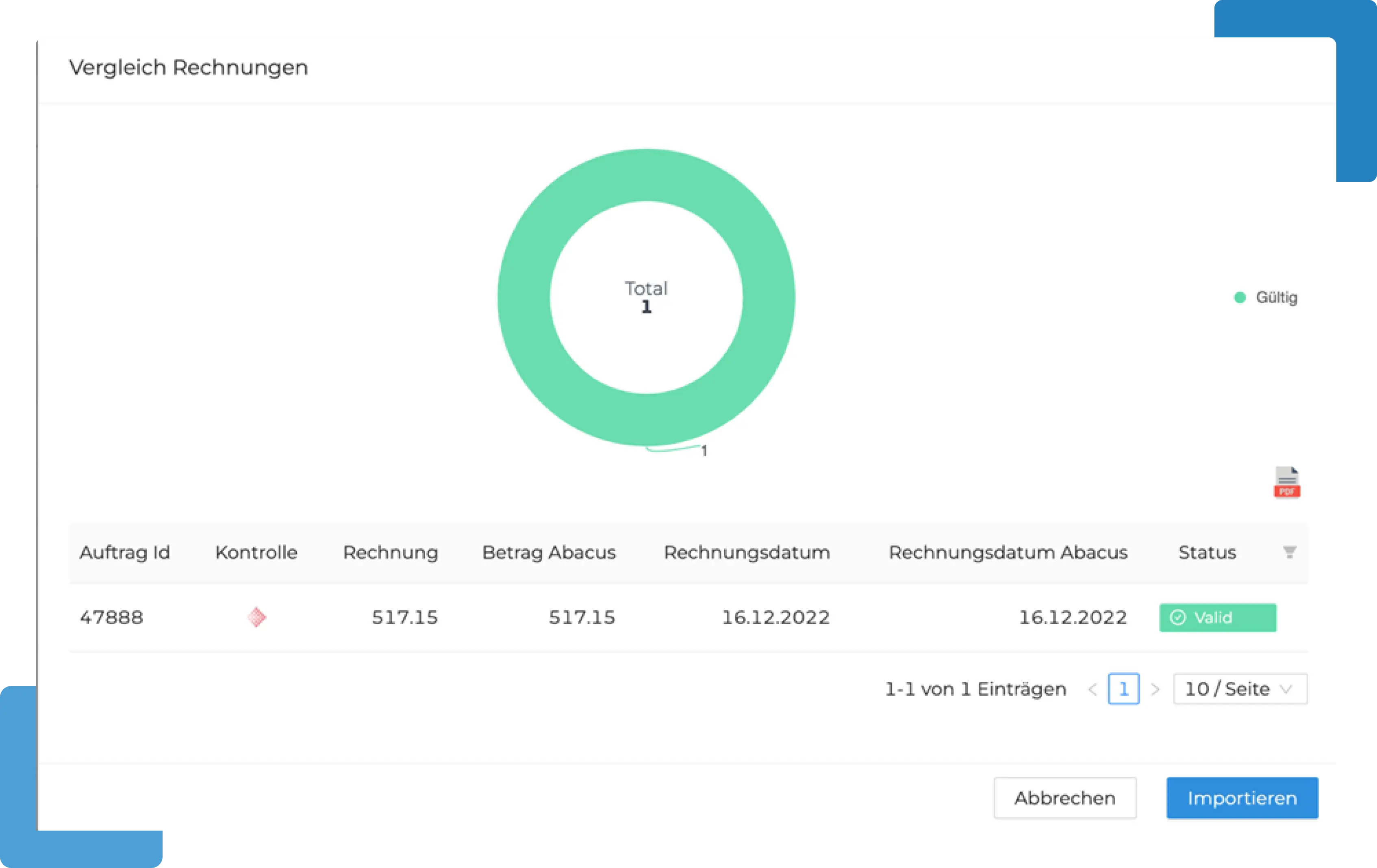View in
Contact info
Breitenstrasse 15,
CH-8852 Altendorfinfo@eximias.ch
+41 44 593 82 15

Do time-consuming accounting work in just a few clicks

As a logical next step, the integration of the accounting system Abacus used by the trust office was brought into focus. Previously, all bookings relating to invoices, credit notes and payments had to be manually maintained and controlled by the accounting department. A major challenge here was in particular to proof (by logging) that all documents in the customer ERP were transferred error-free in the accounting software.

Manage invoices and payments

Integration of the accounting software

Comprehensive reports on data synchronization
Various variants were available to us for the integration of the accounting software. A web service can be used directly, files with the accounting data can be automatically stored on a storage location or these files can also be uploaded directly in the application itself. Our customer did not want access to the accounting software from the ERP side, so the third option was chosen. The upload is also very time-saving with this variant, since, for example, all bookings for a month can be carried out with just a few clicks.

In a first step, we divided all postings that occur in a fiscal year in relation to customer receipts into different types. From this we have built a list of templates, including invoices, credit notes, installments, double and advance payments. Furthermore, rebates and cash discounts are calculated correctly and shown as separate bookings. The XML format specified by Abacus was used for the export. Due to the data transfer via a file, there does not have to be a direct connection between the two systems. A file is simply generated from the customer's ERP, which contains all postings for a selected time period.

To ensure data integrity between the two systems, we then installed control logic that makes it possible to import an export from Abacus and compare it with our ERP system. Here, too, the trustee could carry out the export in his system and transfer the resulting file to the customer for checking. This file creates a log that shows any discrepancies between the two systems. This can be the case, for example, if a posting in Abacus is adjusted after the export.


Simple export of invoices, payments, and credit notes with one click to Abacus or a similar application
Error-free booking transfer without typos
Super time-saving without daily need for individual booking of invoices
Complete automated system with detection of duplicate payments, recognition of installments, and prepayments
Automatic import of standard bank formats and creation of XML payments for import into an accounting software
Constant evaluation of the data between the order system and the accounting software (e.g. Abacus)
Logging of the export process with detailed reports
Data exchange directly with web services or via file exchange (if direct connection is not possible)





